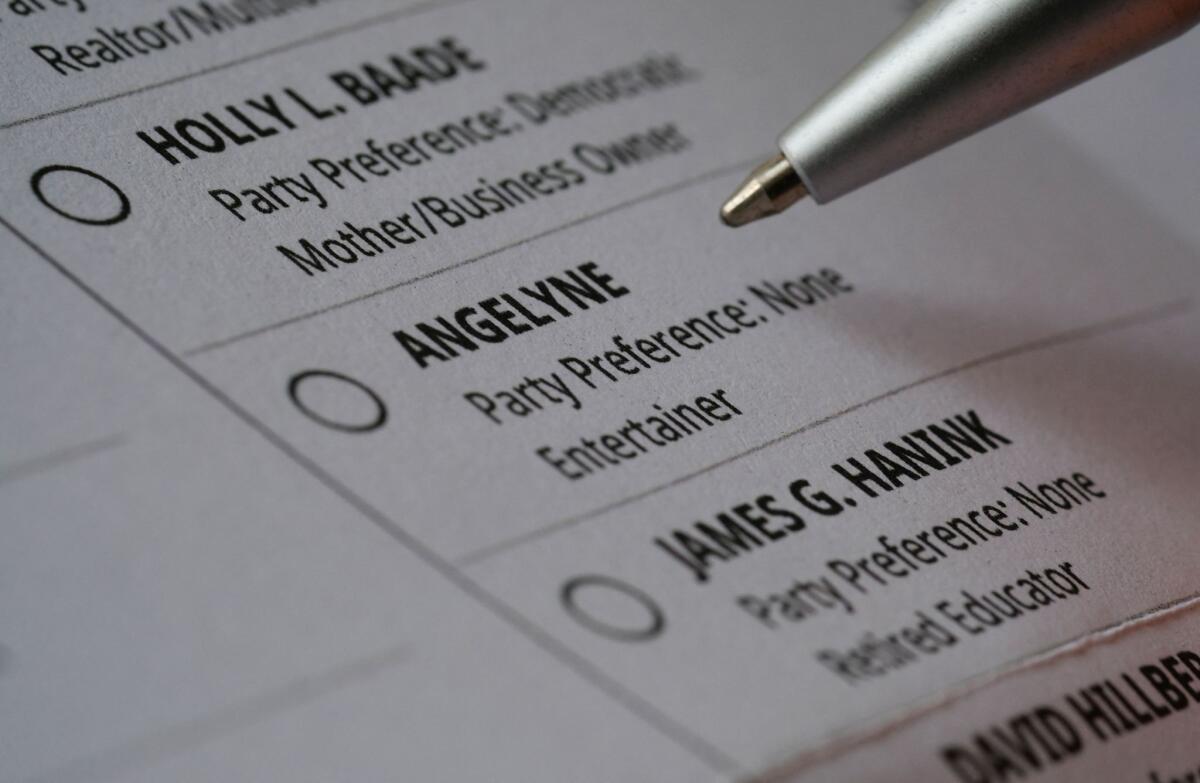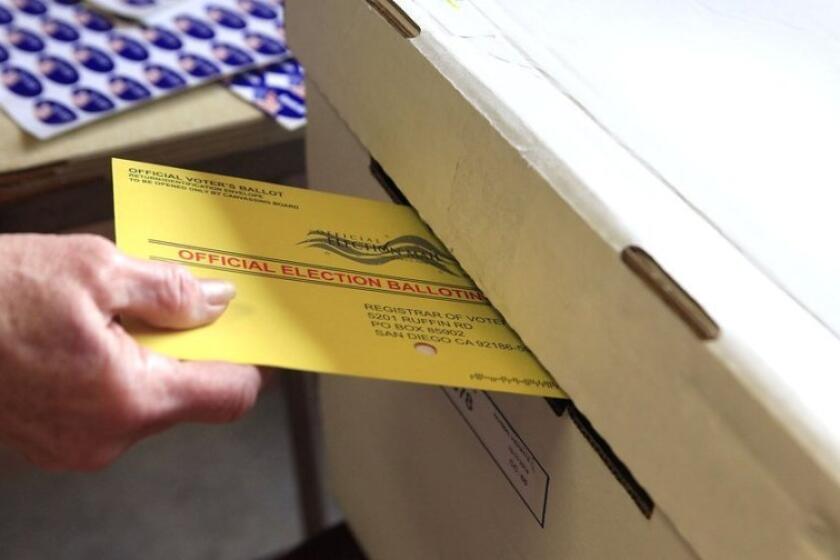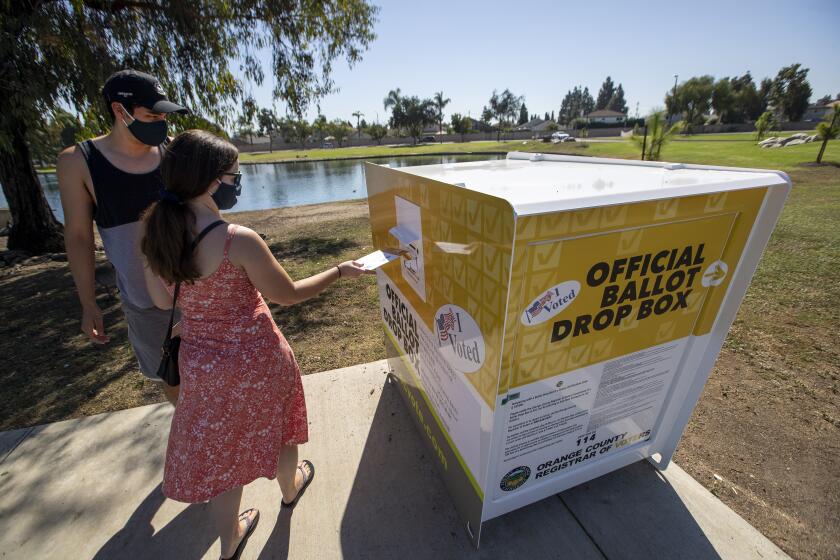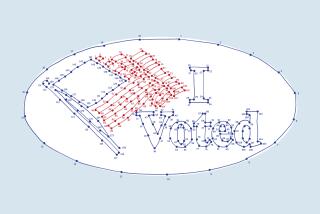Californians can all vote by mail in the recall. Here’s how

- Share via
If California was flirting with mail-in voting before 2020, the COVID-19 pandemic performed a shotgun wedding. To make sure the coronavirus didn’t shut people out of the November 2020 election, the state Legislature passed and Gov. Gavin Newsom signed a measure requiring counties to send mail-in ballots to all registered voters, no application or request necessary. The state later extended this requirement through at least 2021.
The ballots for the Sept. 14 recall election have already been delivered, and voters are starting to fill them out and return them. But it’s not too late to obtain a mail-in ballot if you’re a freshly registered voter or you’re living at a new address. Here are a few tips for how to obtain, return and track your ballot.
How does voting by mail work?
County election officials send a blank ballot, instructions and a postage-paid return envelope to the address on record for each registered voter. You’ll fill out the ballot much the same way as you would in person: There are two questions presented, and you are free to answer both or just one of them.
The first question is whether to recall Newsom, and the second is which candidate should replace him in the event of a successful recall. Because there are 46 candidates listed, the choices appear on both sides of the ballot. (Bear in mind that one of them, former U.S. Rep. Doug Ose, withdrew from the race for health reasons after the ballots were printed.) You can leave either of the two questions blank and still have the one vote you do cast counted.
You’ll need to mark the ballot with a blue or black ink pen to make sure it will be scanned correctly. Then, you’ll need to put it in the return envelope, seal it, and sign and date the back in the box marked “Voter: Sign here. Do not print.”
If you’re not able to sign the back of the ballot envelope, you’ll need to have someone over age 18 watch you mark it in the space provided, and then that person has to sign it. Some counties, including Los Angeles, include a space to fill in your address as well, but ballots will be accepted if the address space is left blank.
You can put your ballot envelope into the mail with no stamp required, although it must be postmarked by Sept. 14 to be counted. You can also drop it off by 8 p.m. Sept. 14 at an official ballot box or polling place. To find one near you, go to the secretary of state’s elections website. In California, it’s also legal to have someone drop the ballot off for you.
What you need to know about California’s Sept. 14 recall election targeting Gov. Gavin Newsom.
What happens next?
To guard against fraud, county officials will compare your signature on the back of the envelope with one they have on file — typically from your voter registration, your driver’s license or a previous mail-in ballot — so it’s a good idea to sign the envelope the same way you sign an official government document. In the last two statewide elections, roughly 1% of the mailed-in ballots were rejected because of a signature mismatch.
If your envelope is rejected, election officials are required to notify you within 24 hours and give you a chance to resubmit the ballot with a new signature, which you can do up to two days before the election results are certified.
Once the signature on the envelope is verified, the ballots are removed and scanned for counting.
The reason the envelopes have holes in them is to let elections officials know when an envelope is empty, which helps guard against an envelope being discarded after the signature is verified but before the ballot has been removed. Some recall proponents contend that the holes can reveal whether you’ve voted in favor of removing Newsom, suggesting that the governor’s supporters in county elections offices may toss those votes in the trash (a felony punishable by up to three years in prison). If this strikes you as a real issue, you can insert the ballot into the envelope facing the other direction or fold it the opposite way.
Democrats, Republicans, former governors, newspapers — they all have recommendations and endorsements for the California recall election. Here’s a sampling.
What are the deadlines?
Mail-in ballots will be sent to anyone who registers to vote by Aug. 30. You can still register after that, but you’ll have to cast a conditional vote in person.
If you have moved and would like a mail-in ballot sent to your new address, you have until Sept. 7 to notify your county elections office of the change.
How do you get notified that your ballot has been received and counted?
The secretary of state’s office has an electronic tracking system that can follow your ballot from the moment it’s sent to you to the moment it’s counted. You can sign up at wheresmyballot.sos.ca.gov and specify how you’d like to receive updates — you can choose text, email and phone calls, as well as specifying which language the update should use.
In Los Angeles County, you can also check to see whether your ballot has been received and your signature verified at lavote.net/AV_Inquiry.
Newsom’s anti-recall campaign raked in more money in its first five months — $54 million — than the $50.2 million his 2018 campaign raised over four years.
More to Read
Get the L.A. Times Politics newsletter
Deeply reported insights into legislation, politics and policy from Sacramento, Washington and beyond. In your inbox twice per week.
You may occasionally receive promotional content from the Los Angeles Times.














